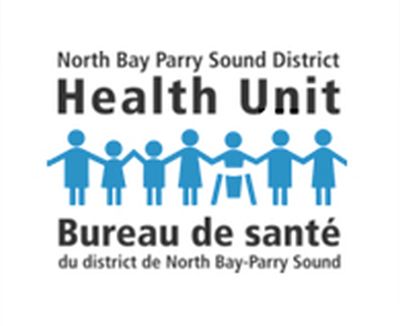The North Bay Parry Sound District Health Unit (NBPSDHU) is mandating the use of face-coverings in enclosed public spaces effective July 24, 2020.
The NBPSDHU states that “face coverings must be worn in ‘enclosed public spaces’. This means indoor spaces of businesses, organizations, and services accessed by the public, including public transportation. Face coverings should also be worn in other spaces (indoor or outdoor) where physical distancing is challenging or not possible.”
The NBPDSHU says that certain exemptions for the face coverings apply such as;
Age (children under the age of two years or under the age of five years either by birth age or mental development and cannot be persuaded)
Health or ability
Religious officiants
Staff working within or behind a physical barrier (e.g. plexiglass barrier) provided physical distancing of two meters can be maintained among staff, or in an area of an enclosed public space that is not designated for public access and where physical distancing of two meters can be maintained.
No proof of exemption is required.
More detailed information regarding the mandate can now be found on the Health Unit website at myhealthunit.ca/
The directive falls under the provisions of the province’s Emergency Management and Civil Protection Act.
“It is encouraging to see the ongoing low number of positive cases being reported, and the economy opening up,” said Dr. Jim Chirico, Medical Officer of Health. “However, as more businesses and public places open, the risk of spreading COVID-19 increases. Wearing a face covering is an added way to protect the people around you.”
The NBPSDHU classify a face covering as “a cloth face covering, or other face-covering with preferably two layers of material that securely covers the nose, mouth, and chin and is in contact with the surrounding face without gapping to contain coughs, sneezes, and respiratory spit and spray of the person wearing the face covering. Face coverings such as a bandana, scarf, cloth, niqab or burka are not designed to filter air and do not have many layers; however, they are a better alternative if a face covering is not available. (Where possible, a cloth mask should be worn underneath a head covering to ensure the best fit against the face.) Medical masks (i.e. surgical, medical procedure face masks and N95 respirators) should be reserved for use by health care workers and first responders.”
They also encourage the community to be ‘COVID kind’ and understand that not everyone can wear a face-covering safely, and may need accommodation and understanding.
They stress that a face-covering does not replace physical distancing and other protective health measures such as hand washing, and isolating yourself when you have symptoms and arranging for COVID-19 testing.
The directive falls under the provisions of the province’s Emergency Management and Civil Protection Act.



